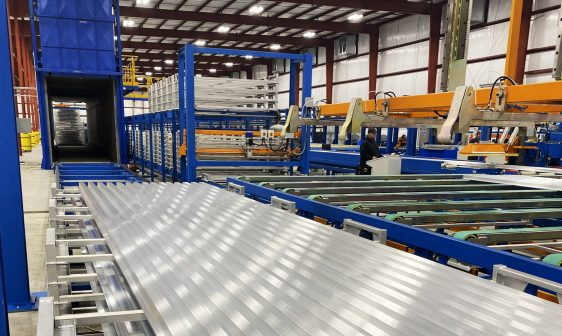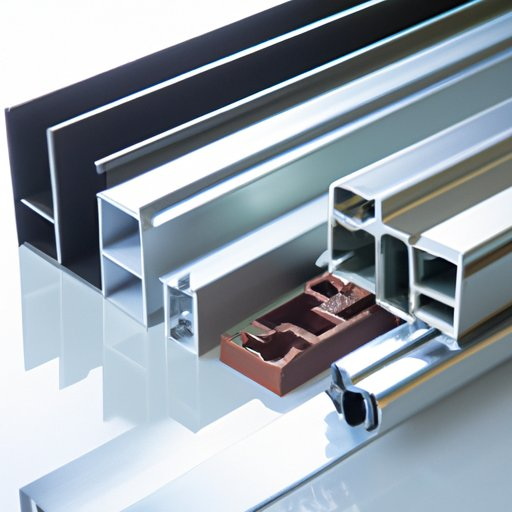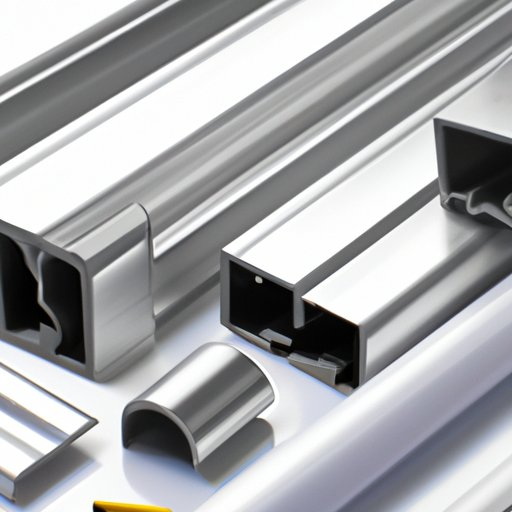Content Menu
● Understanding 2010 Aluminum Alloy
>> Key Properties of 2010 Aluminum Extrusion
● Best Applications for 2010 Aluminum Extrusion
>> Aerospace Components
>> Automotive Industry
>> Industrial Machinery
>> Construction and Architectural Applications
>> Electronics and Electrical Components
>> Marine Applications
>> Sporting Goods
>> Custom Fabrication
● Advantages of Using 2010 Aluminum Extrusion
● Conclusion
● Frequently Asked Questions
>> 1. What is the primary advantage of using 2010 aluminum extrusion?
>> 2. In which industries is 2010 aluminum extrusion commonly used?
>> 3. How does 2010 aluminum extrusion compare to other aluminum alloys?
>> 4. Is 2010 aluminum extrusion resistant to corrosion?
>> 5. Can 2010 aluminum extrusion be recycled?
Aluminum extrusion is a manufacturing process that shapes aluminum alloy into a desired cross-sectional profile. The process involves forcing heated aluminum through a die, resulting in long lengths of aluminum with a consistent shape. Among the various aluminum alloys, 2010 aluminum extrusion is particularly notable for its excellent mechanical properties, making it suitable for a wide range of applications. This article explores the best applications for 2010 aluminum extrusion, highlighting its versatility and advantages in various industries.

Understanding 2010 Aluminum Alloy
2010 aluminum alloy is a high-strength alloy primarily composed of aluminum, copper, and small amounts of other elements. It is known for its excellent machinability and good corrosion resistance, making it a popular choice in applications where strength and durability are critical. The alloy is often used in structural applications, aerospace components, and various industrial products.
Key Properties of 2010 Aluminum Extrusion
- High Strength: 2010 aluminum extrusion exhibits superior strength compared to other aluminum alloys, making it ideal for load-bearing applications.
- Good Machinability: This alloy can be easily machined, allowing for precise fabrication of complex shapes and components.
- Corrosion Resistance: While not as corrosion-resistant as some other aluminum alloys, 2010 still offers decent resistance, especially when properly treated.
- Lightweight: Aluminum is inherently lightweight, which is a significant advantage in applications where weight reduction is essential.
Best Applications for 2010 Aluminum Extrusion
Aerospace Components
One of the most significant applications of 2010 aluminum extrusion is in the aerospace industry. The high strength-to-weight ratio of this alloy makes it an excellent choice for aircraft structures, including fuselage frames, wing components, and landing gear. The ability to withstand high stress and fatigue makes 2010 aluminum extrusion a preferred material for critical aerospace applications. The aerospace sector demands materials that can endure extreme conditions, and 2010 aluminum meets these requirements effectively.
Automotive Industry
In the automotive sector, 2010 aluminum extrusion is used for various components, including chassis parts, structural supports, and engine components. The lightweight nature of aluminum helps improve fuel efficiency and reduce emissions in vehicles. Additionally, the strength of 2010 aluminum allows for the design of safer and more robust vehicle structures. As the automotive industry increasingly focuses on sustainability, the use of aluminum is becoming more prevalent, with 2010 aluminum extrusion leading the way in innovative designs.
Industrial Machinery
2010 aluminum extrusion is widely used in the manufacturing of industrial machinery. Its excellent machinability allows for the production of complex parts and components that require precise tolerances. Common applications include frames, brackets, and housings for various machines, where strength and durability are paramount. The ability to create custom shapes and sizes makes 2010 aluminum extrusion a go-to choice for manufacturers looking to optimize their machinery.
Construction and Architectural Applications
In construction, 2010 aluminum extrusion is utilized for structural elements, window frames, and curtain walls. The alloy's strength and lightweight properties make it an ideal choice for modern architectural designs that require both aesthetics and structural integrity. Additionally, aluminum's resistance to corrosion ensures longevity in outdoor applications. Architects and builders appreciate the flexibility of aluminum extrusion, allowing for creative designs that can withstand the test of time.

Electronics and Electrical Components
The electronics industry also benefits from 2010 aluminum extrusion, particularly in the production of heat sinks and enclosures. The alloy's thermal conductivity helps dissipate heat effectively, ensuring the reliable operation of electronic devices. Furthermore, its lightweight nature is advantageous in portable electronic applications. As technology advances, the demand for efficient thermal management solutions continues to grow, making 2010 aluminum extrusion a critical component in modern electronics.
Marine Applications
In marine environments, 2010 aluminum extrusion is used for boat frames, masts, and other structural components. The alloy's resistance to corrosion, especially when anodized, makes it suitable for use in saltwater conditions. Its lightweight nature also contributes to improved performance and fuel efficiency in marine vessels. The marine industry values the durability and strength of 2010 aluminum extrusion, which can withstand harsh conditions while maintaining structural integrity.
Sporting Goods
The sporting goods industry utilizes 2010 aluminum extrusion in the production of various equipment, including bicycles, golf clubs, and other athletic gear. The strength and lightweight properties of the alloy enhance performance while ensuring durability under stress. Athletes and manufacturers alike benefit from the advantages of aluminum extrusion, leading to the development of high-performance sporting equipment.
Custom Fabrication
Many manufacturers leverage the versatility of 2010 aluminum extrusion for custom fabrication projects. The ability to create unique shapes and profiles allows for tailored solutions in various applications, from specialized machinery to artistic installations. Custom fabrication using 2010 aluminum extrusion enables businesses to meet specific needs and innovate in their respective fields.
Advantages of Using 2010 Aluminum Extrusion
- Cost-Effective: While the initial cost of aluminum extrusion may be higher than some materials, the long-term benefits, including durability and low maintenance, make it a cost-effective choice.
- Sustainability: Aluminum is recyclable, making it an environmentally friendly option. The use of recycled aluminum in extrusion processes further reduces the environmental impact.
- Design Flexibility: The extrusion process allows for the creation of complex shapes and profiles, enabling innovative designs that meet specific application requirements.
- Reduced Weight: The lightweight nature of aluminum helps reduce transportation costs and energy consumption in various applications, contributing to overall efficiency.
Conclusion
2010 aluminum extrusion is a versatile and high-performance material that finds applications across various industries, including aerospace, automotive, construction, and electronics. Its unique properties, such as high strength, good machinability, and lightweight nature, make it an ideal choice for demanding applications. As industries continue to seek lightweight and durable materials, the demand for 2010 aluminum extrusion is expected to grow.

Frequently Asked Questions
1. What is the primary advantage of using 2010 aluminum extrusion?
The primary advantage is its high strength-to-weight ratio, making it ideal for applications requiring durability without adding excessive weight.
2. In which industries is 2010 aluminum extrusion commonly used?
It is commonly used in aerospace, automotive, construction, electronics, and marine industries.
3. How does 2010 aluminum extrusion compare to other aluminum alloys?
2010 aluminum extrusion offers superior strength and machinability compared to many other aluminum alloys, making it suitable for high-stress applications.
4. Is 2010 aluminum extrusion resistant to corrosion?
While it has decent corrosion resistance, it is often treated or anodized to enhance its durability in harsh environments.
5. Can 2010 aluminum extrusion be recycled?
Yes, aluminum is highly recyclable, and using recycled aluminum in extrusion processes is common, contributing to sustainability efforts.






















